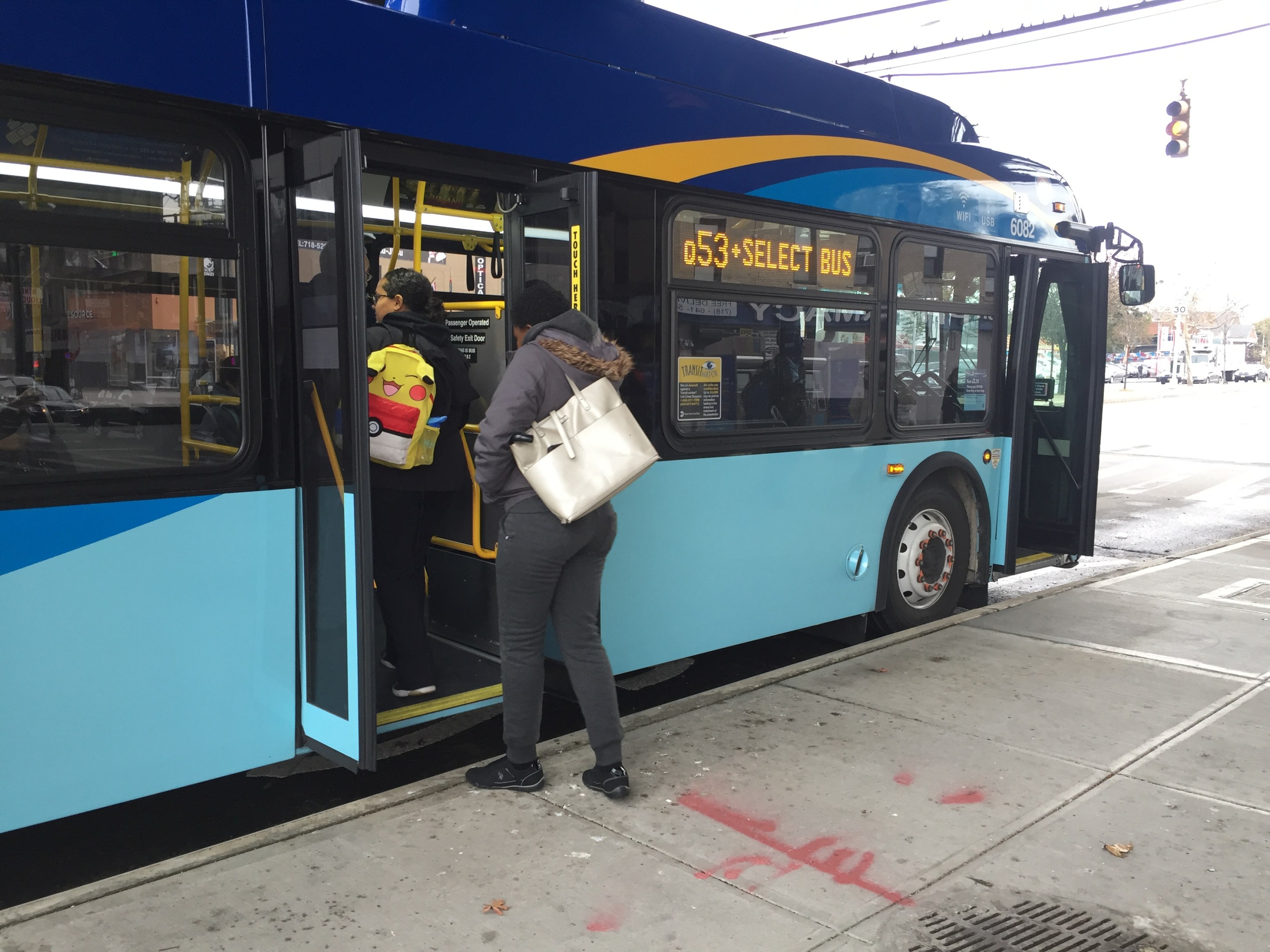This is one cancellation that's actually stuck.
A year after MTA CEO and Chairman Janno Lieber said that he was mothballing the agency's modest 10-bus-route pilot for time-saving all-door boarding, there is still no plan to introduce or even test the practice.
An MTA spokesperson merely said there was "no update" on the agency's plans for the back-door boarding pilot, which was unceremoniously axed in 2022. At the time, Lieber said he was trying to find "the right time" to start the pilot, which was announced in 2021 and then sat on the shelf for months.
When asked if the agency could share anything about whether it was actually going to follow through with the long-delayed pilot, a spokesperson said that the lack of any update spoke for itself.
That signaled to some longtime advocates that the MTA might never actually do it — and that could result in even more people demanding free buses, which Lieber has dismissed as difficult and experimental.
"The MTA ignores the need to implement rider-centric improvements like all-door boarding at their peril," said TransitCenter Director of Communications Haley Richardson. "There's a growing chorus of advocates and legislators pushing for the MTA to make buses free in order to make them faster and easier to use. The longer the MTA fails to fix some of these well documented pain points with all-door boarding, the stronger the chorus for free buses will become."
All-door boarding has been pitched since at least 2016 as a way reduce dwell time by speeding up bus boarding. The practice has been used on Select Bus Service, and has even been found to reduce dwell times by as much as 40 percent on some of those routes because passengers were able to pay their fares at fareboxes located at bus stops. But the MTA has resisted expanding all-door boarding to local or limited routes even though it works in little-known cities such as "London" and "San Francisco."
In a further odd twist to the saga, the agency actually finished installing OMMY readers on every bus in the MTA fleet in 2021, but it has not turned the machines on. As a result, riders are still forced to stand in a line and board only at the front of the bus at local bus stops across the city, as Upper East Side resident and Manhattan Community Board 8 member Billy Freeland showed last Thursday.
The MTA had a plan to speed up buses & improve ridership. After investments in OMNY, we were supposed to have “all-door boarding”—i.e., enter the bus at any door. Instead, in its quest against fare evasion, we’re back to single-door, longer lines, more delays. Is it worth it? pic.twitter.com/RKfODkB63W
— Billy Freeland 🚴♂️🚠 (@BillyFreelandNY) February 16, 2023
Lieber's justification in 2022 for not starting the pilot, which would have run on a minuscule 4 percent of the MTA's local and limited bus routes, was that fewer than 20 percent of bus riders were using OMNY, and that the tap-and-go payment option wasn't available to reduced-fare or student MetroCard holders. But the MTA introduced a reduced fare OMNY option in late October 2022. Advocates pressed the agency to make getting the word out about OMNY a top priority so that it could hurry up and actually start using the fare collection machines installed on all of its buses.
"We urge the MTA to prioritize the adoption of OMNY and ensure that proof of payment is required for passengers boarding via the rear door," said Liam Blank, the associate director of the Permanent Citizens Advisory Committee to the MTA. "We also encourage the MTA to expand its public outreach campaigns to inform riders about the benefits of switching to OMNY."
The agency did not respond to a question on whether OMNY use on the bus had gone up since March last year when the pilot was officially buried.
In previous years, the MTA has also justified not testing out all-door boarding because agency executives were hyper-concerned about fare evasion. The MTA's most recent figures say fare evasion hit 36.3 percent on local buses in the fourth quarter of 2022, suggesting in part that riders are getting on the back door of the bus anyway. Not extending that option to riders who want to pay but also board the bus quickly is simply not dealing with reality, according to the bus drivers on the ground.
"The public knows the fastest way to get on a bus is through any door that's open," said TWU Local 100 Vice-President JP Patafio. "If I'm on Church Avenue and Nostrand and the back door's open? I'm going through the back. It's quicker to get on, it's quicker to get off. [MTA leadership] is stuck, and because the policies aren't catching up with the reality and what's best, in a sense, they're choking the system."






